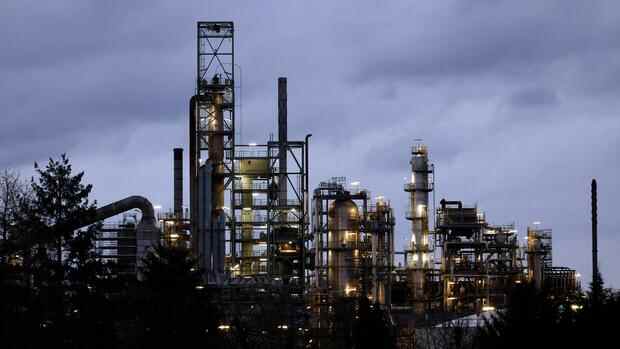In the 1970s, data was collected from all refinery companies operating in the Federal Republic of Germany.
(Photo: imago images/Future Image)
In view of the suspicion that consumer prices for mineral oil products are too high, the introduction of an “excess profit tax” is currently being discussed intensively.
It would make sense to first create transparency about the facts before considering such a systemic intervention in the taxation of companies in an individual sector. There are ways to do this that were used in the energy crises of the 1970s.
During the oil crisis of 1973/74, the FDP-led Federal Ministry of Economics and Technology in the then social-liberal coalition voluntarily agreed the “National Information System” (NIS) with the mineral oil industry to improve the Federal Government’s information about the German oil market. The system introduced at that time essentially consisted of two parts:
- monthly reports on prices for petroleum products on the domestic market (consumer, wholesale, ex-refinery)
- the quarterly reports on the crude oil supply costs, the import prices for mineral oil products, the essential cost elements in the areas of processing and distribution, the net proceeds by main product, the earnings statement and the sales structure of the mineral oil industry
Top jobs of the day
Find the best jobs now and
be notified by email.
Since 1974, this system has been continuously adapted to changing national and international requirements in constructive cooperation with the mineral oil industry. This included the introduction of an overview of the profit and loss accounts of companies in the petroleum processing and distribution sector.
The author is a member of the Studies Committee of the World Energy Council and chairman of the editorial group Energy for Germany of the World Energy Council in Germany. At the end of the 1970s, as a consultant at the Federal Ministry of Economics, he was responsible for the information system on the cost and earnings situation in the mineral oil sector (NIS).
(Photo: Hans-Wilhelm Schiffer)
This income statement included both an indication of the essential cost data – this includes, in addition to the costs for crude oil and imported petroleum products, above all the costs for semi-finished products, processing, products purchased domestically, administration and distribution – as well as the net proceeds.
At the end of the 1970s, an independent institute prepared the data
The economic result could be derived from a comparison of average net proceeds and cost price, which is shown as a profit if the difference between these two figures is positive and as a loss if the difference is negative.
In addition to the average margins for all petroleum products, the development of the net sales of the individual products over time as well as that of the individual sales channels for the various products became comprehensible. This data was recorded by all refinery companies operating in the Federal Republic of Germany.
>> Read also: FDPPolitician wants to break up oil companies if necessary – SPD-Left praises “constructive proposal”
At the beginning of 1979, the Federal Ministry of Economics and Technology had reached an agreement with the petroleum industry that made it possible to publish the cost and earnings data reported by the individual companies in an aggregated form.
The Energy Economics Institute at the University of Cologne (EWI) was commissioned with this task by the Federal Ministry of Economics. This independent scientific institute had prepared and commented on the data.
This made an important contribution to increasing the transparency of the earnings situation on the mineral oil market for the public. At the same time, this system had effectively counteracted excessive pricing by companies.
More: Debate about special tax: Should the state skim off the billions in profits from the oil companies?
